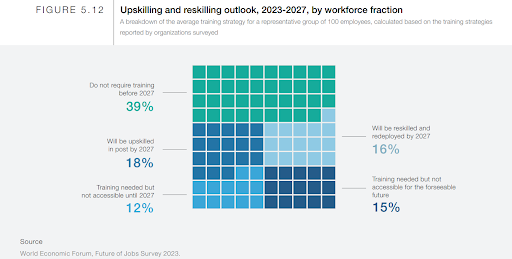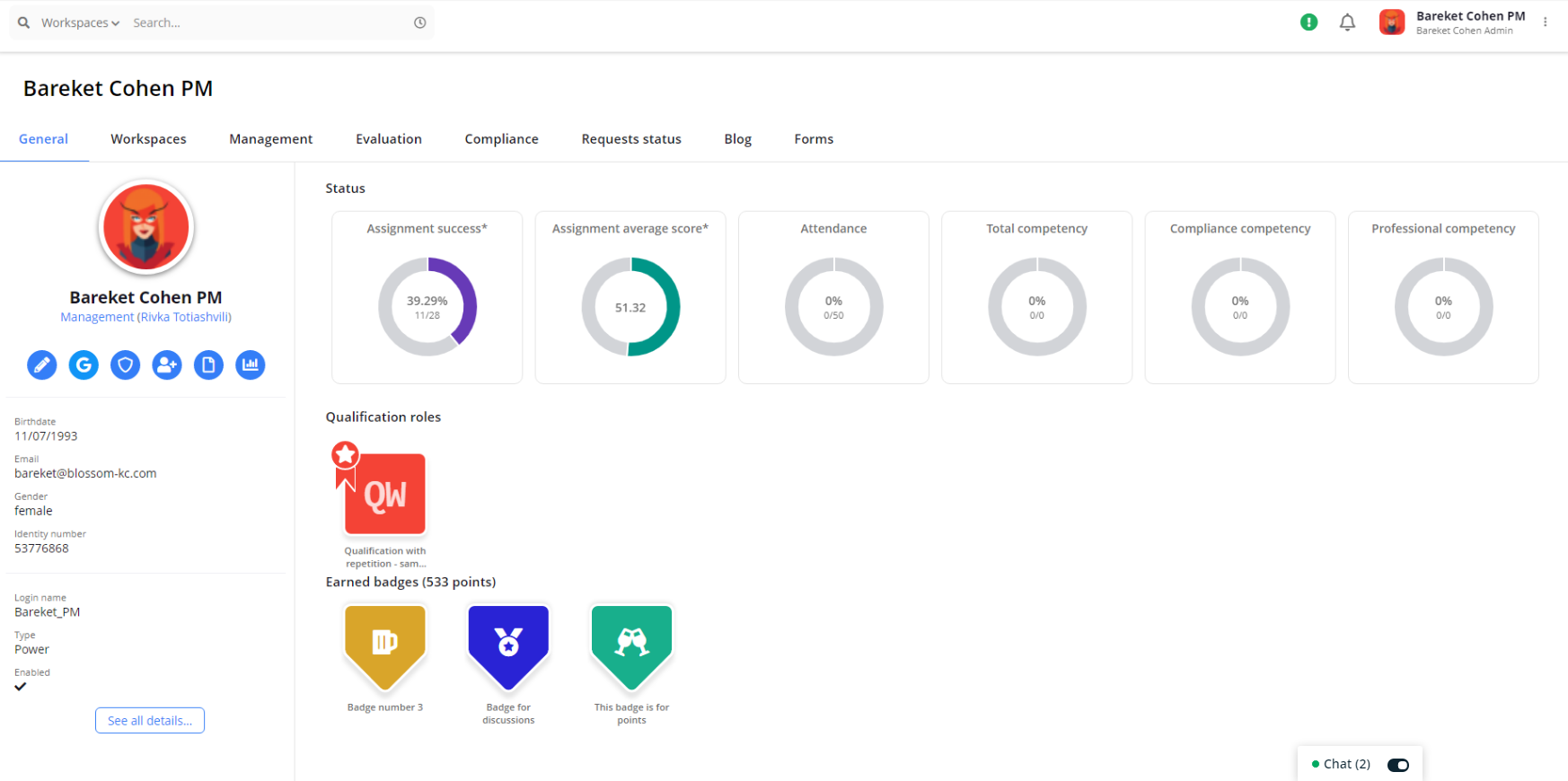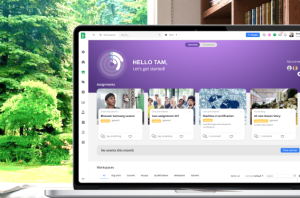Learn how to start re-skilling your workforce from scratch or enhance and adapt your existing re-skilling processes. Enhance operational efficiency and increase business resilience.
Businesses that empower employees to adapt, grow, and thrive in an ever-changing business environment reap the benefits. The ability to stay agile, innovate and remain competitive helps organizations respond to market changes and technological advances.
It’s why improving the skills and knowledge of employees have been a critical component of any successful business. According to the 2023 Workplace Learning Report, up-skilling employees is one of the top four focus areas of learning and development (L&D) 2023.
By embracing up-skilling and re-skilling in the workplace, you can equip your workforce with the knowledge and skills needed to thrive in a digital era and position your organization for long-term success.
This article will help your organization have the skills to navigate an evolving environment. Discover the difference between up-skilling and re-skilling and the benefits of each.
Learn how to start re-skilling your workforce from scratch or enhance and adapt your existing re-skilling processes. Enhance operational efficiency and increase business resilience.
What is the difference between up-skilling and re-skilling?
Although up-skilling and re-skilling have some similarities, they also have distinct differences.
Up-skilling is the process of learning new skills or teaching new skills. Employees can perform their current roles more effectively and efficiently by providing training and development opportunities to upgrade competencies.
Improving communication skills, adapting to organizational change, or learning to use new software are examples of up-skilling. It focuses on enhancing employees’ existing skills to keep pace with the evolving requirements of their current jobs.
By contrast, re-skilling is learning new skills so employees can do a different job. It usually involves transitioning employees from one job role to another and learning new skills.
For example, an employee may want to pursue a career in leadership. Re-skilling can offer a range of learning opportunities, such as gaining a leadership qualification or participating in leadership coaching to help an individual acquire the necessary skills and confidence to get a promotion.
What are the benefits of re-skilling?
Learning and development budgets remain strong–highlighting the continual demand for improving employee skills and knowledge.
As technology changes how organizations work, companies expect to fund their reskilling and upskilling programs by 2027 to meet the demand for new skills.

As up-skilling and re-skilling are effective strategies that can be used interchangeably to combat a skills shortage, re-skilling puts people and skills at the centre of organizational success.
Higher levels of employee engagement
Disengaged employees cost money. Since an average salary is around $47,000, businesses lose approximately $16,000 yearly for each disengaged employee. If your organization has 60 employees, it equates to almost $1 million each year in lost revenue.
It’s hardly surprising businesses keep employee engagement high on their agenda.
But how does re-skilling directly relate to higher levels of employee engagement?
L&D teams, HR leaders, and managers are best placed to keep workers engaged, happy, and motivated. They can support and nurture talent–helping employees learn new skills and improve performance.
Let’s put that into practice and say two store assistant roles are becoming redundant. You notice both disengaging at work with higher rates of unexplained absenteeism, a lack of teamwork, and overall effort.
Reskill by offering training opportunities to become customer service agents. Retain product knowledge and experience, and develop talent in another department.
Create a customized learning program that offers re-skilling opportunities. Offer a positive pathway for employees to explore different career opportunities. Give workers a new passion for work, inspiring and motivating them to thrive–leading to higher engagement and boosting staff morale.
Reduce employee turnover
Employees feel valued when given opportunities to learn and re-skill.
The top two reasons for employee turnover are no opportunities for advancement and low pay. However, according to SurveyMonkey, approximately 86% of employees say workplace training is important.
Re-skilling employees demonstrate a commitment to their professional growth and well-being. And when workers feel valued, the investment in employee development can foster a sense of loyalty and gratitude towards an organization.
Workers given opportunities to reskill are more likely to remain with the company–reducing turnover rates. In fact, 94% of workers would stay longer if companies invested in their careers–opening up an ideal opportunity for businesses that want to improve employee retention.
Creates a continuous learning culture
A continuous learning culture is a workplace that actively promotes and supports ongoing professional development for employees at all levels.
Learning is not viewed as a one-off event or limited to formal training programs. Re-skilling and up-skilling are threaded throughout work practices by integrating learning into everyday work processes, such as accessing the latest research or allowing dedicated time for reflection.
Considering over three-quarters of employees say they’re more likely to stay with a company that offers continuous training, re-skilling offers:
- Encouragement for employees to take risks, experiment, and learn from both successes and failures
- Opportunity and autonomy to explore new ideas, develop skills, and apply their learning directly to their new role
- The scope for collaboration and knowledge by sharing new knowledge, expertise, and best practices with others
Lay the foundation for a culture of ongoing learning and growth. Encourage employees to take ownership of their learning by providing resources and support for re-skilling initiatives.
Higher ROI
Hiring new employees doesn’t come cheap. Costs associated with job advertisements, conducting interviews, and other overheads, like administrative and venue costs, can equate to hiring a full-time employee in the UK at around £81,000.
By re-skilling existing employees, organizations can avoid these recruitment costs altogether. Instead of going through the entire hiring process for new talent, organizations can invest in developing the skills of their current workforce, reducing the need for external hiring. It’s why an overwhelming number (97%) of L&D and HR leaders say they prioritize internal talent over hiring for open positions.
Reduce costs associated with hiring new employees to meet needs. Comprehensive software like Blossom is a powerful platform to help manage learning and development, and people functions seamlessly in one place. Automate administrative tasks, such as recruitment scheduling and registration.
Optimize re-skilling tasks and evaluate employee performance. Track staff progress and identify re-skilling challenges and areas for development.

Start re-skilling and up-skilling your workforce
Rre-skilling initiatives can have a transformative impact on any organization. By embracing innovation and flexibility, companies can proactively anticipate and respond to disruptions, such as changes in the economy or customer behaviour.
Let’s look at how you can start to up-skill and re-skill your workforce.
1. Align your L&D strategy with corporate priorities
Undertaking a re-skilling and up-skilling journey requires a strategic approach. Aligning an L&D strategy with corporate priorities is essential for ensuring that training initiatives support and contribute to the overall goals and objectives of the organization.
Align talent development efforts with corporate priorities by identifying and attracting candidates with the skills and competencies to fulfill strategic objectives.
Partner with business leaders to understand the skills and capabilities required for success and design targeted talent development programs, such as re-skilling initiatives to meet those needs.
Businesses that strategically identify and address skill gaps can ensure a workforce equipped to meet current and future demands.
2. Conduct employee skills analysis
By thoroughly analyzing your organization’s future skill needs, businesses can identify emerging technologies, industry trends, and changing job roles that will impact your business. This analysis will serve as a foundation for designing a targeted re-skilling program.
Robust analytics software, like Blossom, offers essential information about learning and development gaps, strengths, and weaknesses and is a starting point for designing a targeted re-skilling plan.
Let’s look at the AI in the workplace. AI tools enhance productivity, automate tasks, and improve decision-making, such as chatbots handling customer service inquiries or algorithms that analyze patterns in data to identify trends, predict outcomes, and optimize processes.
The increased use of generative AI in the workplace will continue to force businesses to recognize the need for training and up-skilling that this new era will require. In fact, an overwhelming 86% of people in today’s workforce say they will need up-skilling to meet future advances in AI technology.
As well as employees being able to use such technology, they also need to understand that AI raises concerns. Job displacement, ethical considerations, data privacy, and bias can cause significant issues.
Organizations must address these challenges responsibly by ensuring transparency, fairness, and accountability in AI systems and by widespread re-skilling or up-skilling employees to adapt to the changing work landscape.
3. Develop a Skills Development Plan
Use the data from your employee skills audit to make better decisions about up-skilling and re-skilling programs–for your whole organization or an individual employee.
Firstly, a strategic skills development plan based on the skill needs assessment of an entire company should outline the specific skills and competencies that need to be developed or enhanced within your workforce.
You may notice gaps in compliance training or identify high-potential employees. Develop opportunities to reskill or upskill and meet regulatory requirements or prepare workers for future leadership positions.
Secondly, analytics from an employee’s personal development review supports employee growth, engagement, and career progression.
The plan needs to align with business goals and priorities, for example:
- Up-skilling an individual to improve communication skills by offering coaching or mentoring opportunities. Strong communication skills enable leaders to clearly articulate their vision, ensuring that everyone understands the strategic direction and their role in achieving it.
- Re-skilling an entire department to handle organizational change. Strategic plans often involve organizational change, creating resistance or uncertainty among employees and teams. Resilience training can help them navigate imminent changes in the workplace.
Align a skills development plan with emerging technologies, trends, and research. Prioritize the skills most relevant to your organizational goals- at corporate and individual levels. Develop a roadmap for how you will address future skills requirements now and in the future.
Respond to changing workplace demands
The relentless pace of new technologies requires a resilient and adaptable workforce.
Employee up-skilling and re-skilling allows businesses to meet ever-changing demands and foster a culture of continuous development.
Build a workplace culture where everyone has the tools, development opportunities, and skills to thrive now and in the future. Start up-skilling and re-skilling your workforce with Blossom. Schedule a demo today.








